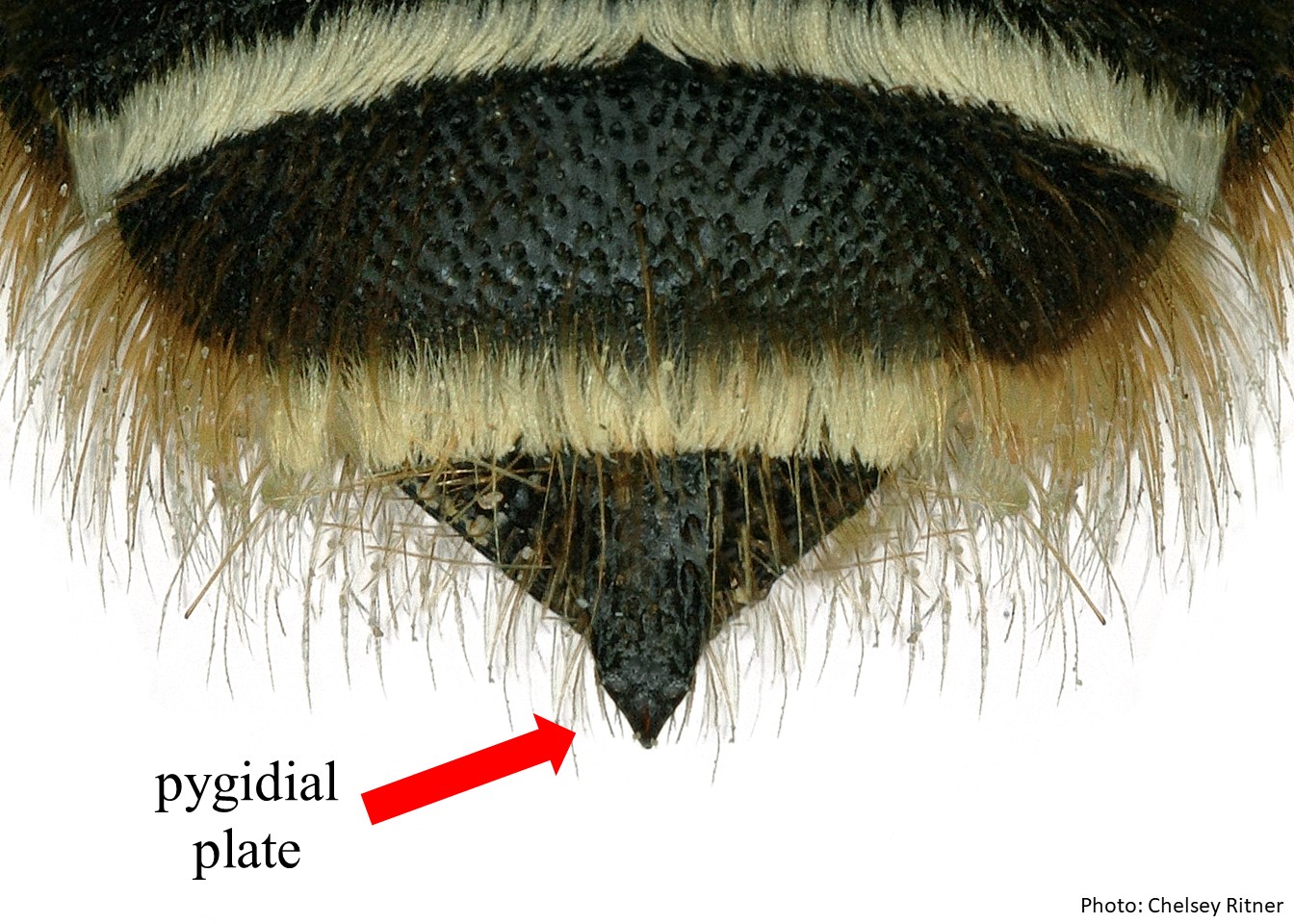Family: Apidae
Subfamily: Xylocopinae
Tribe: Xylocopini
Genus: Xylocopa
Subgenus: Prosopoxylocopa, Hurd and Moure 1963Hurd and Moure 1963:
Hurd, P.D. and J.S. Moure. 1963. A Classification of the Large Carpenter Bees (Xylocopine) (Hymenoptera: Apoidea). University of California Publications in Entomology (Vol. 29). Berkeley and Los Angeles: University of California Press, 365 pp.
Common name: Carpenter bee
Xylocopa (Prosopoxylocopa) are small to medium sized bees, 10 – 25 mm in length, with black integumentintegument:
a tough, protective outer layer
. They have sparse, to moderately dense, primarily black pubescencepubescence:
short, fine hair
, often with some pale hairs on their head, thorax, and legs. They have amber to brown colored wings (Hurd and Moure 1963Hurd and Moure 1963:
Hurd, P.D. and J.S. Moure. 1963. A Classification of the Large Carpenter Bees (Xylocopine) (Hymenoptera: Apoidea). University of California Publications in Entomology (Vol. 29). Berkeley and Los Angeles: University of California Press, 365 pp.).
Xylocopa (Prosopoxylocopa) contains only one species, Xylocopa mirabilis (Hurd and Moure 1963Hurd and Moure 1963:
Hurd, P.D. and J.S. Moure. 1963. A Classification of the Large Carpenter Bees (Xylocopine) (Hymenoptera: Apoidea). University of California Publications in Entomology (Vol. 29). Berkeley and Los Angeles: University of California Press, 365 pp.; Michener 2007Michener 2007:
Michener, C.D. 2007. The Bees of the World (2nd ed.). Johns Hopkins University Press, Baltimore and London, 953 pp.).
Xylocopa (Prosopoxylocopa) is endemic to Madagascar (Michener 2007Michener 2007:
Michener, C.D. 2007. The Bees of the World (2nd ed.). Johns Hopkins University Press, Baltimore and London, 953 pp.).

Distribution map generated by Discover Life -- click on map for details, credits, and terms of use.
Xylocopa (Prosopoxylocopa) has been observed pollinating the flowers of Dichaetanthera (Eardley and Coetzer 2016Eardley and Coetzer 2016:
Eardley C. and W. Coetzer. 2016. Xylocopa sicheli Vachal, 1898, Catalogue of Afrotropical Bees. Version 1.6. Agricultural Research Council. https://doi.org/10.15468/u9ezbh.).
(modified from Hurd and Moure 1963Hurd and Moure 1963:
Hurd, P.D. and J.S. Moure. 1963. A Classification of the Large Carpenter Bees (Xylocopine) (Hymenoptera: Apoidea). University of California Publications in Entomology (Vol. 29). Berkeley and Los Angeles: University of California Press, 365 pp. and Minckley 1998Minckley 1998:
Minckley, R. L. 1998. A Cladistic Analysis and Classification of the Subgenera and Genera of the Large Carpenter Bees, Tribe Xylocopini (Hymenoptera: Apidae). Natural History Museum, The University of Kansas 9: 1-47.)
 short, practically nonexistent.
short, practically nonexistent. entire, not emarginateemarginate:
entire, not emarginateemarginate: with subapicalsubapical:
with subapicalsubapical:Xylocopa (Prosopoxylocopa) is most similar to X. (Zonohirsuta). Males can be distinguished by the continuous yellow maculations from the labrumlabrum:
part of the head abutting the clypeus, folds down in front of the mouthparts
 to the supraclypeal areasupraclypeal area:
to the supraclypeal areasupraclypeal area:
the region of the head between the antennal sockets and clypeus, demarcated on the sides by the subantennal sutures in addition to their very narrow face, and eyes that are bulging strongly medially towards the antennal sockets. Females can be distinguished by their simple basitibial platebasitibial plate:
a small plate at the base of the hind tibia, like a kneecap (Minckley 1998Minckley 1998:
Minckley, R. L. 1998. A Cladistic Analysis and Classification of the Subgenera and Genera of the Large Carpenter Bees, Tribe Xylocopini (Hymenoptera: Apidae). Natural History Museum, The University of Kansas 9: 1-47.).
The nesting habits of Xylocopa (Prosopoxylocopa) are unknown but most members of Xylocopa bore into the stems and branches of woody plants to construct their nests (Michener 2007Michener 2007:
Michener, C.D. 2007. The Bees of the World (2nd ed.). Johns Hopkins University Press, Baltimore and London, 953 pp.).
There are no known invasives.
Hurd, P.D. and J.S. Moure. 1963. A Classification of the Large Carpenter Bees (Xylocopine) (Hymenoptera: Apoidea). University of California Publications in Entomology (Vol. 29). Berkeley and Los Angeles: University of California Press, 365 pp.
Michener, C.D. 2007. The Bees of the World (2nd ed.). Johns Hopkins University Press, Baltimore and London, 953 pp.
Keasar, T. 2010. Large Carpenter Bees as Agricultural Pollinators. Psyche doi:10.1155/2010/927463.
Eardley, C., W. Coetzer. 2016. Catalogue of Afrotropical Bees. Version 1.6. Agricultural Research Council. GBIF.org (https://doi.org/10.15468/u9ezbh).